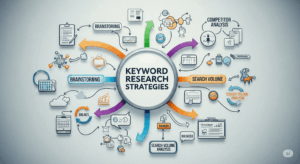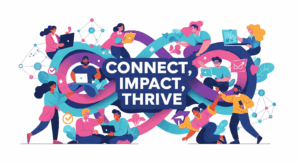Ever feel like your marketing efforts are a shot in the dark? You create amazing content, launch compelling ads, but the path from interest to purchase still feels like a mystery. In today’s complex digital world, understanding your customer isn’t just about demographics or purchase history; it’s about grasping the intricate web of interactions, touchpoints, and, most importantly, influence points that shape their decisions. This is where influence maps become your secret weapon, putting them at the core of your marketing strategy.
Imagine having a clear visual representation of every significant factor influencing your customers, from personal recommendations to online reviews, and even subconscious triggers. That’s the power of influence mapping. And the best part? With the rapid advancements in AI, understanding and influencing customers is becoming more insightful and actionable than ever before. Let’s explore how to better understand and influence customers in steps, focusing on six steps to apply influence maps with AI.
What are Influence Maps and Why Are They Crucial Now?
At its heart, an influence map is a visual representation of the various factors, individuals, channels, and experiences that impact a customer’s decision-making process. It goes beyond a simple customer journey map by highlighting not just what happens, but who or what holds the most sway at each stage.
In 2025, with information overload and personalized experiences being the norm, influence maps are more crucial than ever because:
- Complex Customer Journeys: Customers interact with brands across numerous online and offline touchpoints, making their journey anything but linear.
- Rise of Diverse Influencers: Beyond traditional advertising, peer reviews, social media content, and even AI-generated recommendations play a massive role.
- Need for Targeted Marketing: Generic messaging falls flat. Understanding precise influence points allows for hyper-personalized and effective outreach, boosting customer engagement and conversion rates.
- Optimizing Marketing Spend: By identifying where real influence lies, you can allocate your marketing budget more efficiently for maximum ROI.
Six Steps to Apply Influence Maps with AI in Your Marketing Strategy
Ready to put the power of influence maps to work? Here’s a six-step playbook, enhanced by the capabilities of AI in marketing, to help you draw, understand, and act on these powerful insights.
Step 1: Define Your Target Customer Segments & Goals
Before you map influence, you need to know who you’re mapping for and what you want them to do.
- Understand Your Audience: Go beyond basic demographics. Develop rich buyer personas that include their motivations, pain points, aspirations, and preferred channels. AI tools can help analyze vast amounts of customer data (CRM, social media interactions, website behavior) to identify nuanced segments and even suggest potential new personas you might have missed.
- Set Clear Objectives: What’s the specific behavior you want to influence? Is it a purchase, a sign-up, a download, or a referral? Having a clear goal for each segment is crucial for building effective influence maps.
Step 2: Identify Key Touchpoints and Information Sources
This is where you brainstorm every single interaction a customer might have with your brand, your competitors, or even third-party information.
- Map the Customer Journey: Start by charting a basic customer journey map. Think about the awareness, consideration, decision, and post-purchase stages.
- Uncover Information Sources: For each stage, list out where customers get information and what triggers their next step. This includes your website, social media profiles, customer service, reviews sites, forums, friends, family, online communities, news articles, and even subconscious internal triggers.
- AI’s Role: AI-powered analytics tools can process vast amounts of unstructured data from social listening, customer reviews, support tickets, and web analytics to pinpoint frequently visited pages, common search queries, and recurring sentiment patterns, highlighting crucial touchpoints you might otherwise overlook. Sentiment analysis can reveal emotional influence points.
Step 3: Assess the Level of Influence at Each Touchpoint
Now, assign a ‘weight’ or ‘level of influence’ to each identified touchpoint. This is the core of your influence map.
- Qualitative & Quantitative Analysis:
- Qualitative: Conduct surveys, interviews, and focus groups. Ask customers directly: “What influenced your decision to [action]?” or “Whose opinion do you trust most when researching [product type]?”
- Quantitative: Look at your data. Which channels drive the most conversions? Which touchpoints correlate with higher engagement rates? Which reviews lead to sales?
- AI’s Role: AI-driven insights platforms can help immensely here. They can analyze attribution models in your analytics tools, identify patterns in customer pathways, and even use predictive analytics to forecast which touchpoints are most likely to lead to conversions. AI can also help identify micro-influencers or key opinion leaders within specific niches who hold significant sway.
Step 4: Visualize Your Influence Map
A picture truly is worth a thousand data points. Visualizing your influence map makes it easy to understand and share.
- Choose a Format: This could be a flowchart, a mind map, or a sophisticated digital diagram. Tools like Miro, Lucidchart, or even specialized customer journey mapping software often have influence mapping capabilities.
- Show Relationships and Flow: Use arrows to indicate the direction of influence. Vary line thickness or color to represent the strength of influence. Place more influential factors closer to the customer’s decision point.
- AI’s Role: Many AI customer journey mapping tools can automatically generate visual maps based on imported data. They can highlight critical pathways, identify bottlenecks, and even suggest areas where influence is weakest or strongest, accelerating the visualization process.
Step 5: Develop and Optimize Marketing Strategies Based on Insights
This is where the rubber meets the road. Your influence map isn’t just a pretty picture; it’s an action plan.
- Prioritize Investment: Focus your marketing budget and effort on the high-influence touchpoints. If peer reviews are crucial, invest in a strong review management strategy. If thought leadership drives decisions, double down on valuable content creation.
- Tailor Messaging: Craft messages that resonate with the specific type of influence at play. If social proof is high, use testimonials prominently. If expert opinion matters, collaborate with industry leaders.
- Create Integrated Campaigns: Ensure your campaigns flow seamlessly across the identified influence pathways. Don’t operate in silos; marketing, sales, and customer service should all be aligned.
- AI’s Role: AI can help redesign marketing plans by suggesting optimal content formats, channels, and even personalized messaging variations based on the influence map. AI marketing automation can then deliver these tailored messages at the right moments in the customer journey, optimizing for maximum impact and marketing ROI.
Step 6: Monitor, Analyze, and Iterate with AI
Influence maps are dynamic, not static. Customer behaviors and influence points evolve constantly.
- Continuous Monitoring: Regularly track the performance of your strategies using analytics (like Google Analytics 4). Are your key influence points driving the desired actions? Are new influence points emerging?
- AI-Powered Analysis: AI analytics platforms can provide continuous monitoring, flagging shifts in customer behavior, identifying new customer influence points, and even predicting future trends. They can analyze sentiment changes, detect anomalies in referral traffic, or highlight emerging online communities where your customers are gathering.
- Refine Your Maps: Based on your data and AI insights, update your influence maps periodically. This iterative process ensures your marketing strategy remains agile, relevant, and effective in influencing customers over time.
Your AI-Powered Compass for Customer Influence
Understanding and influencing customers in 2025 demands a strategic approach that goes beyond traditional marketing. By putting influence maps at the core of your marketing strategy, you gain unparalleled clarity into the complex decision-making processes of your audience.
The six steps to apply influence maps with AI provide a robust framework, transforming abstract data into actionable insights. Leveraging AI across these steps—from persona development and touchpoint identification to strategic optimization and continuous analysis—allows you to be more precise, more personalized, and ultimately, more successful. So, stop guessing and start mapping. Uncover those invisible strings of influence, and truly empower your marketing to engage, convert, and retain your most valuable asset: your customer.







